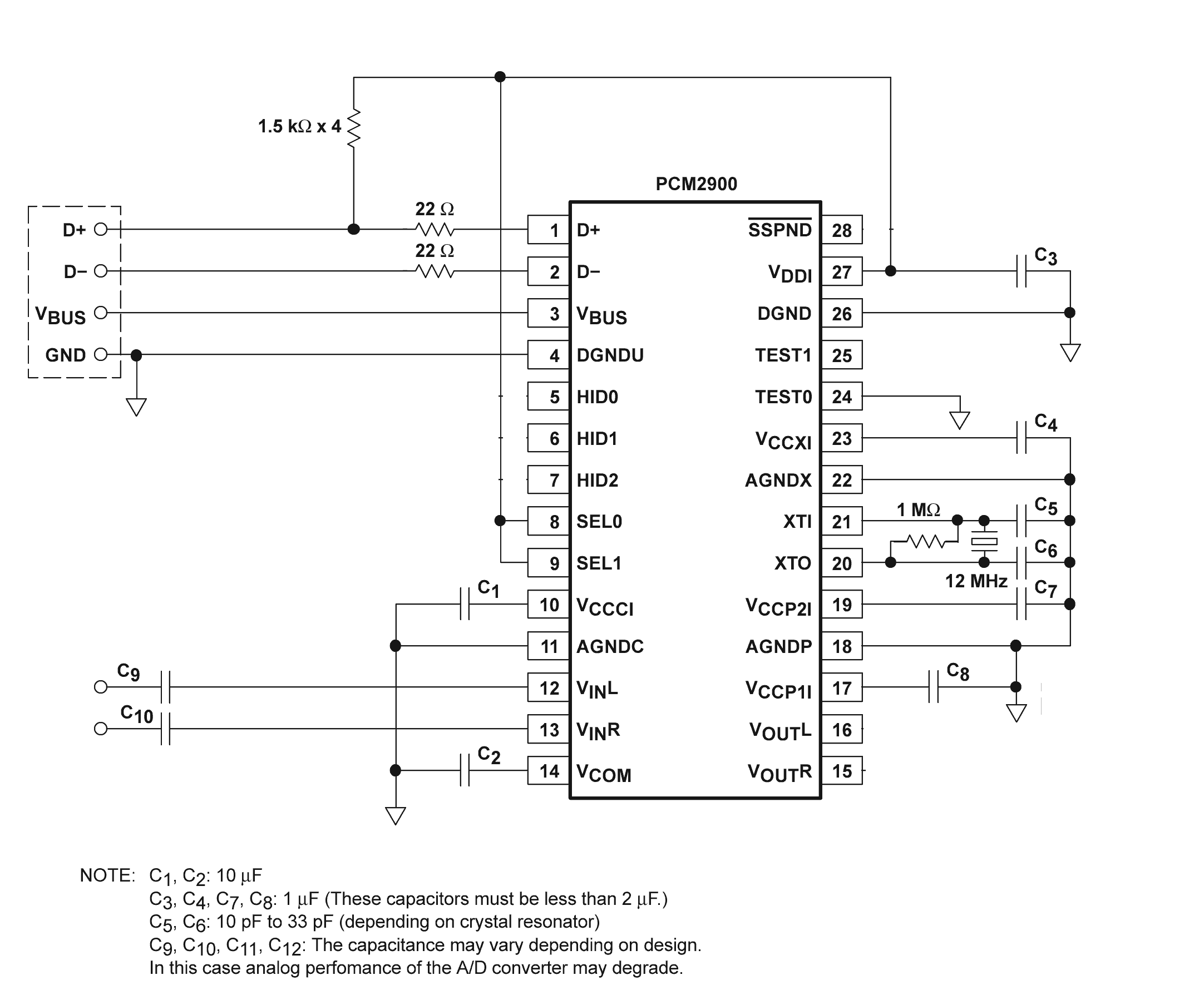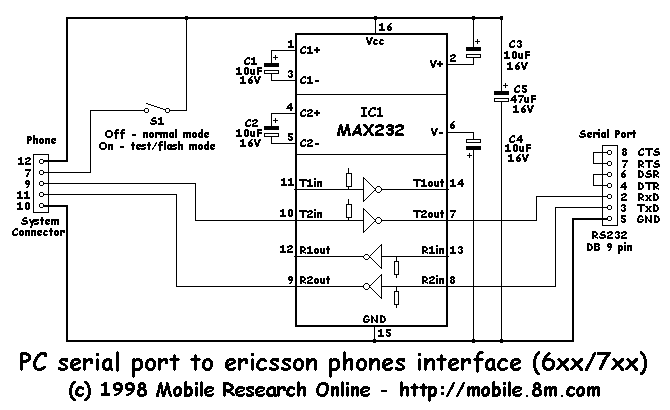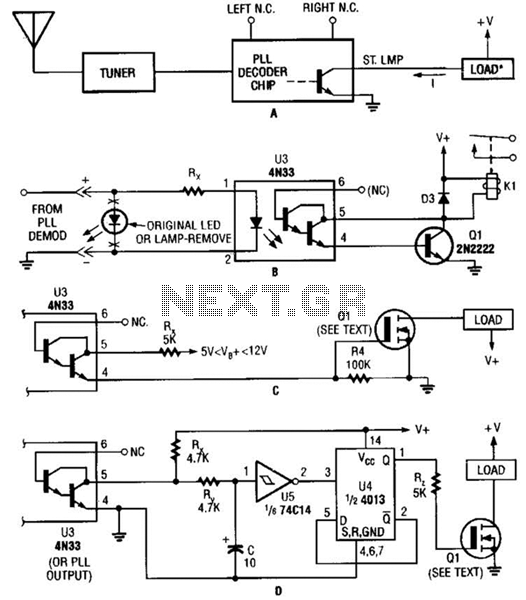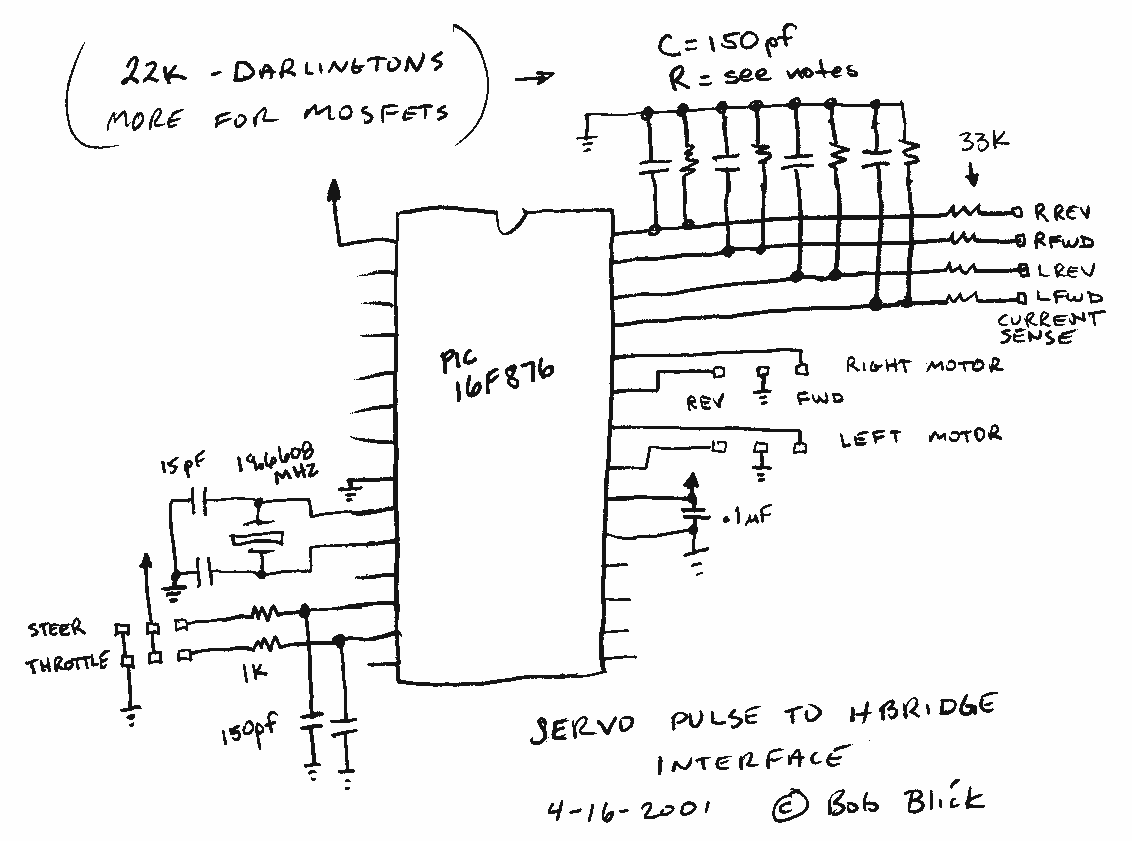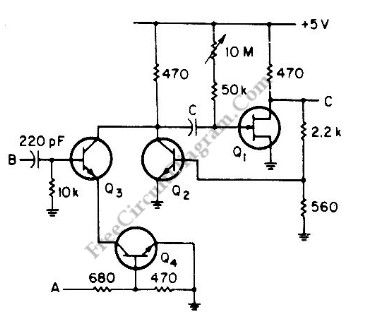
Versatile One-Shot Cpu Interface
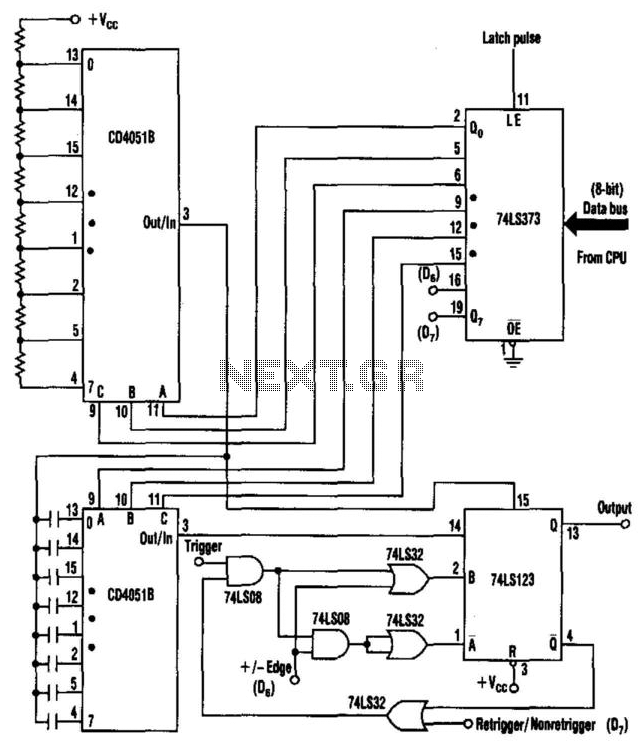
Process control applications often require a monostable multivibrator (one-shot) with a pulse width that can be selected on-the-fly. This circuit uses two CD4051B analog multiplexers to select the required timing components for the multivibrator, and hence, the pulse width. The multiplexers' address input comes from an 8-bit latch. Bit D6 tells the multivibrator whether to trigger on the leading or trailing edge of the trigger input. Bit D7 determines whether the multivibrator should be in a retriggerable or non-retriggerable mode.
The described circuit integrates a monostable multivibrator, commonly referred to as a one-shot pulse generator, which is essential in various process control applications where precise timing is crucial. The pulse width of the generated output can be dynamically adjusted, allowing for flexibility in operation. This capability is achieved through the use of two CD4051B analog multiplexers, which are configured to select different timing components based on the application requirements.
The CD4051B multiplexers function as a switch that routes the appropriate timing components to the multivibrator. By utilizing an 8-bit latch, the circuit can manage the address inputs of the multiplexers. The latch holds the binary code that selects which timing components are active, enabling the user to change the pulse width in real-time without needing to redesign or physically alter the circuit.
In this setup, Bit D6 of the latch plays a critical role in determining the triggering mechanism of the multivibrator. It can be configured to respond to either the leading edge or the trailing edge of the trigger input signal. This feature allows for precise control over the timing of the output pulse, making it adaptable to various signal conditions and requirements.
Additionally, Bit D7 of the latch governs the operational mode of the multivibrator. When set to retriggerable mode, the multivibrator can be retriggered by subsequent input pulses, extending the output pulse duration. Conversely, in non-retriggerable mode, the output pulse will only be generated once upon receiving a trigger, regardless of any subsequent triggers during the pulse duration. This dual-mode functionality enhances the versatility of the circuit in different application scenarios.
Overall, the integration of the CD4051B multiplexers and the 8-bit latch in the design of this monostable multivibrator circuit allows for efficient and flexible pulse width modulation, catering to the demanding needs of modern process control systems. Process-control applications often require a monostable multivibrator (one-shot) with a pulse width that c an be selected on-the-fly. This circuit uses two CD4051B analog multiplexers to select the required timing components for the multivibrator, and hence, the pulse width. The multiplexers" address input comes from an 8-bit latch. Bit D6 tells the multivibrator whether to trigger on the leading or trailing edge of the trigger input.
Bit D7 determines whether the multivibrator should be in a retriggerable or nonretriggerable mode. 🔗 External reference
The described circuit integrates a monostable multivibrator, commonly referred to as a one-shot pulse generator, which is essential in various process control applications where precise timing is crucial. The pulse width of the generated output can be dynamically adjusted, allowing for flexibility in operation. This capability is achieved through the use of two CD4051B analog multiplexers, which are configured to select different timing components based on the application requirements.
The CD4051B multiplexers function as a switch that routes the appropriate timing components to the multivibrator. By utilizing an 8-bit latch, the circuit can manage the address inputs of the multiplexers. The latch holds the binary code that selects which timing components are active, enabling the user to change the pulse width in real-time without needing to redesign or physically alter the circuit.
In this setup, Bit D6 of the latch plays a critical role in determining the triggering mechanism of the multivibrator. It can be configured to respond to either the leading edge or the trailing edge of the trigger input signal. This feature allows for precise control over the timing of the output pulse, making it adaptable to various signal conditions and requirements.
Additionally, Bit D7 of the latch governs the operational mode of the multivibrator. When set to retriggerable mode, the multivibrator can be retriggered by subsequent input pulses, extending the output pulse duration. Conversely, in non-retriggerable mode, the output pulse will only be generated once upon receiving a trigger, regardless of any subsequent triggers during the pulse duration. This dual-mode functionality enhances the versatility of the circuit in different application scenarios.
Overall, the integration of the CD4051B multiplexers and the 8-bit latch in the design of this monostable multivibrator circuit allows for efficient and flexible pulse width modulation, catering to the demanding needs of modern process control systems. Process-control applications often require a monostable multivibrator (one-shot) with a pulse width that c an be selected on-the-fly. This circuit uses two CD4051B analog multiplexers to select the required timing components for the multivibrator, and hence, the pulse width. The multiplexers" address input comes from an 8-bit latch. Bit D6 tells the multivibrator whether to trigger on the leading or trailing edge of the trigger input.
Bit D7 determines whether the multivibrator should be in a retriggerable or nonretriggerable mode. 🔗 External reference

